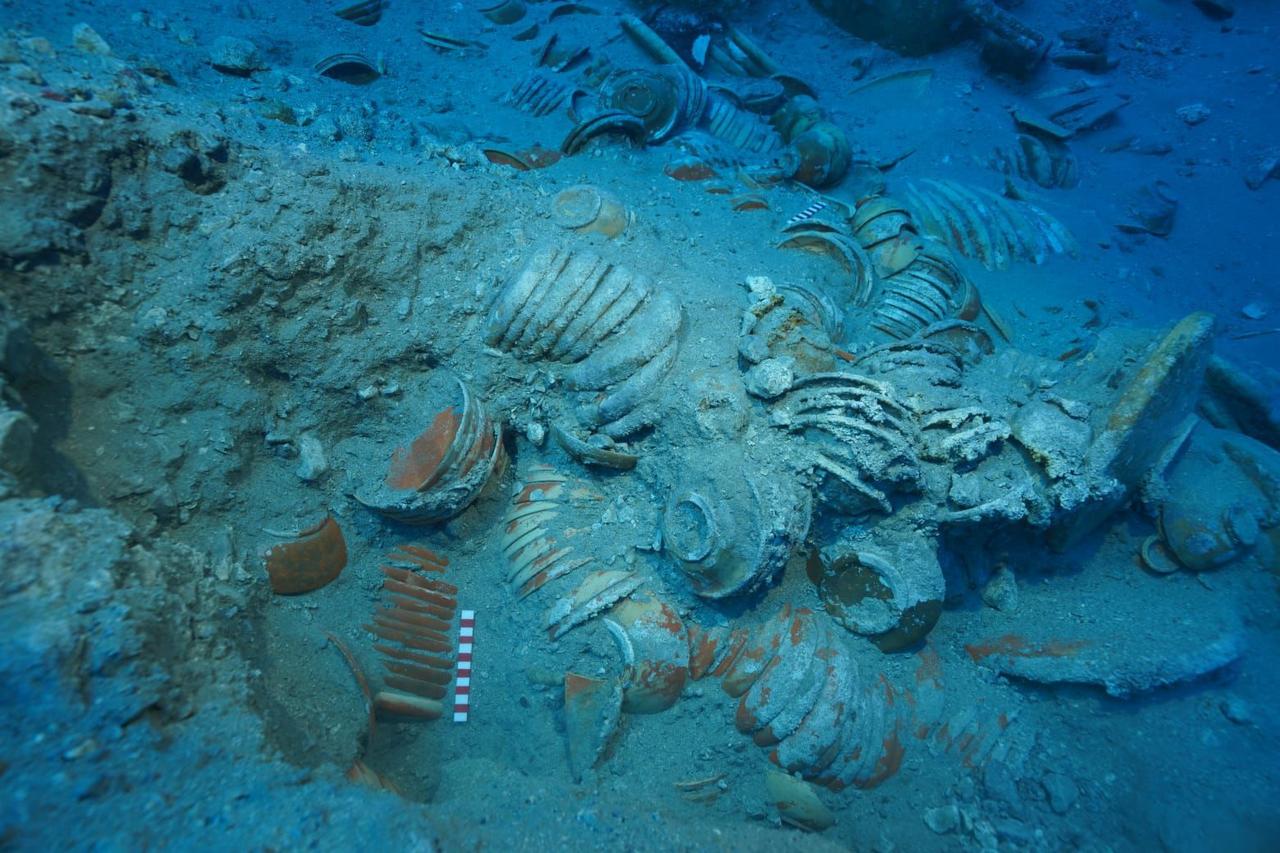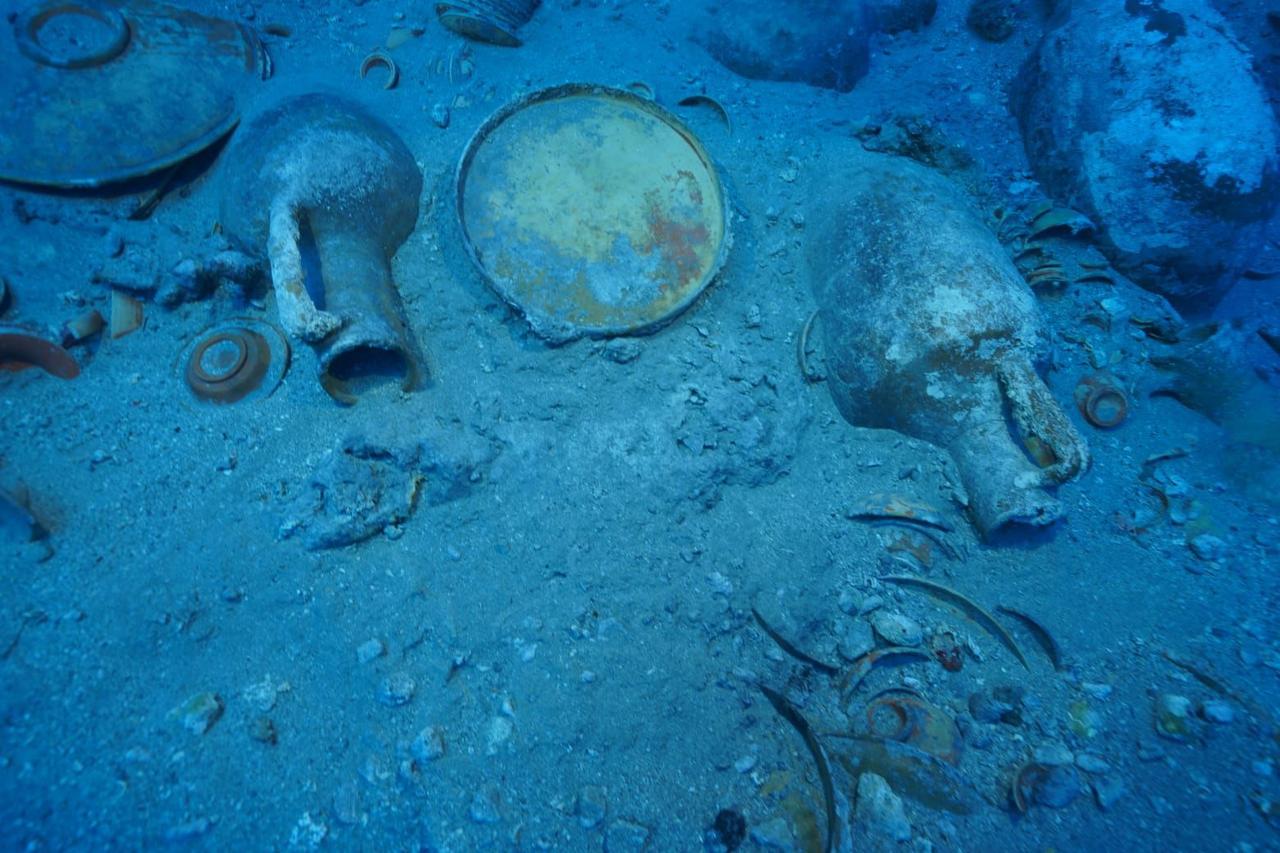Türkiye’s Minister of Culture and Tourism, Mehmet Nuri Ersoy, recently dove off the coast of Adrasan, a coastal town in Antalya's Kumluca district, to examine a rare underwater archaeological find known as the Seramik Batigi, or Ceramic Shipwreck. Lying at depths between 33 and 46 meters, the site dates back to the Late Hellenistic–Early Roman period.
During the dive, archaeologists uncovered hundreds of ceramic items such as plates, trays, and bowls stacked inside one another and coated in raw clay. This protective technique helped preserve the vessels’ original colors and patterns remarkably well. The ship is believed to have been a cargo vessel used for transporting ceramics nearly two millennia ago.

Following his inspection, Ersoy described the discovery as a major contribution not only to Türkiye’s cultural heritage but also to global archaeological research.
“We discovered hundreds of plates, trays, and bowls placed inside one another and coated with raw clay to protect them during transport. Thanks to this method, the ceramics have survived nearly intact, with even their designs remaining clearly visible,” he said.
The excavation is being conducted as part of the Ministry's Heritage for the Future project, which aims to match the scale of the previous 60 years of archaeological activity within just four years. Ersoy emphasized that Türkiye is no longer a passive observer in archaeology but is now actively shaping the field through science and technology.
Türkiye has identified more than 400 underwater wrecks between the ancient city of Patara and the city of Mersin. Systematic underwater studies are now underway at multiple locations year-round, made possible through presidentially authorized excavations, museum-led research, and underwater surveys.

Beyond their visual appeal, the ceramics provide valuable insights into ancient production and packaging techniques. According to Ersoy, the artifacts are currently being carefully preserved at Türkiye’s Regional Restoration and Conservation Laboratories.
He added that every shipwreck represents “a new doorway into our past beneath the sea.” Institutions like the Bodrum Museum of Underwater Archaeology play a key role in making these discoveries accessible to the public. The Ceramic Shipwreck is also expected to attract growing interest from both the archaeological community and international visitors.
To exhibit findings from this and other underwater excavations, Türkiye plans to construct a Mediterranean Underwater Archaeology Museum in the Kemer Idyros region, also in Antalya province. The project design phase has already been completed.